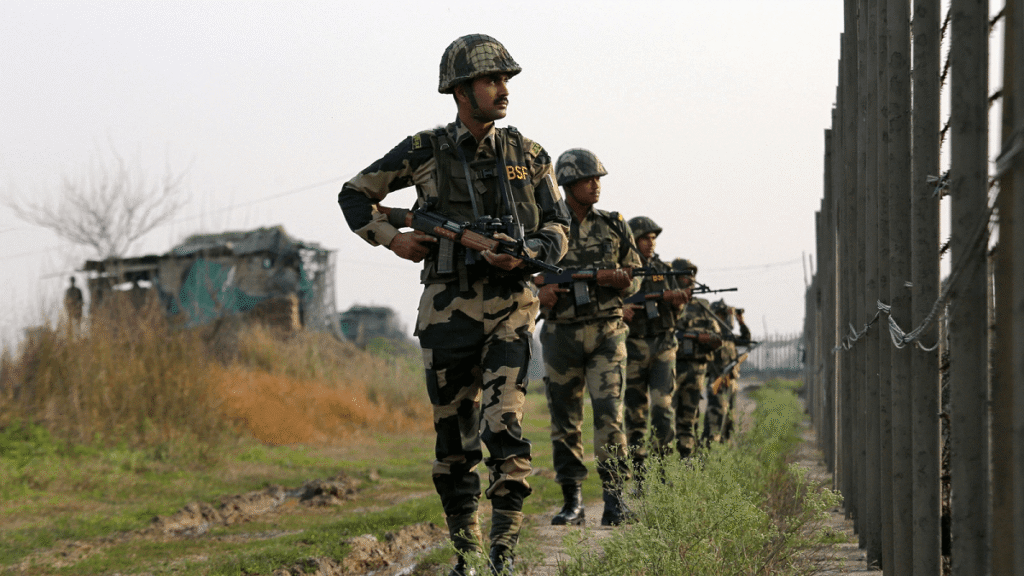
The Pahalgam Attack – Catalyst for Escalation
A Devastating Incident That Ignited Tensions
On April 22, 2025, a violent terrorist attack in Pahalgam, Kashmir, sent shockwaves across the India-Pakistan border. The attack, which resulted in the tragic deaths of 26 people, most of whom were Hindu tourists, is being seen as a major escalation in the ongoing Kashmir conflict. The terrorists, believed to be associated with Pakistan-based militant groups, stormed the popular tourist destination, shooting at civilians and leaving several others wounded.
Who Is Responsible?
The Resistance Front, a terrorist organization with alleged ties to Pakistan, has claimed responsibility for the attack. This group has a history of orchestrating violence in the Kashmir region, further complicating the longstanding rivalry between India and Pakistan. Indian authorities immediately pointed to Pakistan’s role in harboring such militant groups, accusing the nation of complicity.
India’s Immediate Response
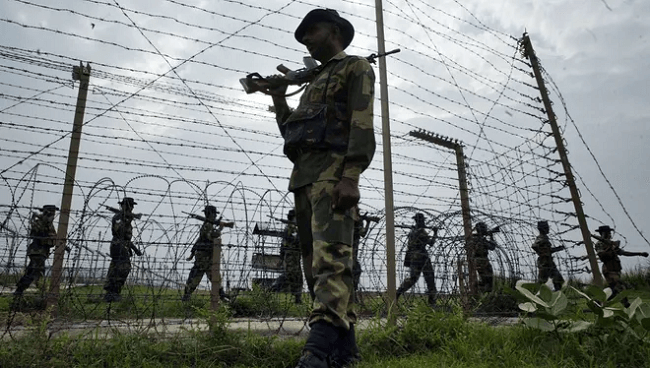
In the aftermath, the Indian government wasted no time in condemning the attack and reinforcing its national security stance. Prime Minister Narendra Modi expressed outrage, vowing to take strong action against any forces attempting to destabilize the region. India’s response included increased military deployments along the Kashmir border, retaliatory airstrikes, and the suspension of key bilateral treaties with Pakistan, including the Indus Waters Treaty, a longstanding agreement between the two nations over shared water resources.
The Diplomatic Fallout
The attack also resulted in a dramatic breakdown of diplomatic relations. India expelled several Pakistani diplomats, accusing them of being complicit in fostering anti-India sentiments. Meanwhile, Pakistan condemned India’s military actions and rhetoric, accusing India of using the incident as a pretext to escalate violence.
A Crucial Moment in India-Pakistan Relations
This attack marks a turning point in the India-Pakistan conflict, as both nations continue to inch closer to open conflict. Pakistan’s Foreign Minister Khawaja Asif responded by reinforcing Pakistan’s commitment to defending its sovereignty and issuing warnings about retaliatory actions. Meanwhile, Attaullah Tarar, Pakistan’s Information Minister, emphasized that Pakistan would not tolerate any foreign interference in its internal affairs.
Also Read This:
Chelsea vs. Liverpool: A Thrilling 2–1 Victory at Stamford Bridge
Global Reactions: Calls for Peace
The international community, including the United Nations, has called for immediate de-escalation and a return to dialogue. However, with both nations now at the brink of full-scale military engagement, the diplomatic efforts to mediate the conflict face significant challenges. The world watches as the situation in Kashmir continues to evolve, with fears that the region’s instability could spill over into a larger, more dangerous confrontation.
Diplomatic Breakdown and Retaliatory Measures
A Swift and Devastating Diplomatic Fallout
In the wake of the Pahalgam attack, the diplomatic ties between India and Pakistan have reached a breaking point. The emotions on both sides are palpable. People who once hoped for peace and cooperation between these two nations are now questioning if the conflict is truly inevitable. The attack, aimed at innocent civilians, has pushed the two countries to the brink, and immediate retaliatory measures followed.
India’s Retaliatory Actions: A Bold Statement of Sovereignty
Following the deadly assault, India acted swiftly, determined to send a message that it would not tolerate violence, particularly in Kashmir, a region it considers integral to its national identity.
Suspension of the Indus Waters Treaty: One of the most symbolic and far-reaching measures was the suspension of the Indus Waters Treaty, a pact that has been in place for over 50 years, regulating water distribution between the two countries. This decision affects millions of lives that depend on the rivers flowing from the disputed region. The suspension not only impacts the environment but also adds to the economic burden on both countries, exacerbating the already fragile relations.
Diplomatic Expulsions and Border Closures: India expelled Pakistani diplomats from New Delhi, a gesture seen as a direct message that it would no longer tolerate Pakistan’s alleged support of militant activities in Kashmir. Borders between the two nations were also closed temporarily, further intensifying the tensions. It’s a move that many see as a stark reminder of how deeply divided both nations remain.
Suspension of Visa Services: The closure of visa services between the countries symbolizes how ordinary people—business professionals, students, families—are caught in the crossfire of geopolitics. For many, this is a personal blow as lives, futures, and opportunities are disrupted because of the escalating conflict. It’s not just about governments; it’s about real people, and the lives they once shared peacefully across the border now threatened.
Pakistan’s Response: A Defiant Stand
In response, Pakistan has made its own series of retaliatory moves, adamantly declaring that it will not back down from defending its sovereignty. These actions reflect the anger and pain felt by ordinary Pakistanis, who view their nation’s honor and survival as being under constant threat.
Airspace Closures: Pakistan announced the closure of its airspace to Indian flights, forcing a halt to many commercial and diplomatic exchanges. This move severely affects the everyday operations of airlines and travel between the two countries. Pakistan also ramped up its military presence along the Kashmir border, preparing for potential skirmishes, which only increases the uncertainty and fear.
Suspension of Bilateral Agreements: Pakistan also took a drastic step by suspending the Simla Agreement, which had historically been a framework for resolving disputes peacefully. This suspension signals an end to the longstanding diplomatic processes that once offered hope for reconciliation.
Expulsion of Indian Diplomats: Pakistan expelled Indian diplomats, pushing the idea that it is resolutely defending its position in the region. The diplomatic closures have created an atmosphere of mistrust, with no clear path forward for open dialogue.
How Ordinary Citizens Are Affected: The Human Toll
The decisions made by governments don’t just stay at the political level—they have profound impacts on the lives of regular citizens. For millions of families living along the India-Pakistan border, these measures are deeply personal.
Families Torn Apart: The visa suspensions and diplomatic expulsions mean that families divided by the border now face even greater barriers to reunite. For many families with relatives on both sides of the border, this is a heartbreaking setback. No matter where you live, having family members separated by geopolitical tensions is a painful reality many can relate to.

Families in Kashmir are displaced due to escalating violence, seeking refuge in camps as tensions rise along the India-Pakistan border. Economic and Emotional Stress: Businesses that once thrived on cross-border trade are now facing significant disruptions. While politics might dictate decisions at the top, it’s the business owners, workers, and entrepreneurs who feel the heat of these decisions most. Kashmir’s once-bustling tourism industry, which brought together people from both countries, is now on the brink of collapse.
The Role of Global Diplomacy
Amid these actions, the international community has called for restraint, urging both India and Pakistan to find peaceful solutions to their ongoing tensions. Global powers such as the United States, China, and the United Nations are working behind the scenes, attempting to mediate the situation and avoid any further escalation. These global actors are aware of the high stakes involved, especially considering the nuclear capabilities of both nations.
Why This Matters for Us
As citizens of the world, we may feel disconnected from these faraway events, but the ripple effects of conflict between nuclear-armed nations extend beyond their borders. As technology and social media continue to connect us in ways we’ve never experienced before, the impact of such actions on peaceful coexistence resonates globally.
At a deeper level, it’s a reminder that every war starts as a disagreement and that no matter how far away we might seem from a conflict, our shared humanity connects us. In times like this, the need for understanding, diplomacy, and cooperation becomes even more critical. Understanding the human toll of these political decisions—how they affect everyday people—should remind us of the importance of working toward peace rather than escalating violence.
Intelligence Reports and Military Preparedness
Rising Tensions: Is War Imminent?
In the aftermath of the deadly Pahalgam attack, intelligence reports from both India and Pakistan indicate that military action could be imminent. As both nations gear up for potential confrontation, regional stability remains precarious, with global leaders closely monitoring the situation.
Pakistan’s Intelligence: A Stark Warning
On April 29, 2025, Pakistan’s military intelligence presented a troubling report, suggesting that India is preparing for military strikes within the next 24 to 36 hours. The intelligence outlined movements of Indian troops near the Kashmir border, and air force readiness was reportedly raised to combat alert levels. This information has led Pakistan to take immediate action—mobilizing its own forces to defend its borders.
The report from Pakistan’s Inter-Services Intelligence (ISI) has been shared with international allies, urging them to pressure India to prevent further escalation. Khawaja Asif, Pakistan’s Defense Minister, publicly warned that any military action by India would face “forceful retaliation.” This statement underscores Pakistan’s resolve to defend its sovereignty, even in the face of extreme provocation.
India’s Military Stance: A Rapid Response
India, for its part, is not sitting idle. Prime Minister Narendra Modi and Defense Minister Rajnath Singh have given Indian military forces the green light to respond swiftly to any further attacks. On the evening of April 28, India’s top brass were reportedly in high-level meetings, discussing defensive military strategies and preparing for possible airstrikes aimed at strategic Pakistani military targets.
The Indian Army, known for its superior technology and manpower, has now positioned elite commando units and special forces along the border. The Indian Air Force (IAF), including fighter jets and surveillance drones, are in high operational readiness, and intelligence agencies are tracking potential militant movements in both Kashmir and Pakistan-administered regions.
Global Reactions: A Call for Caution
The international community has reacted with growing concern, urging both India and Pakistan to exercise restraint. UN Secretary-General António Guterres has issued a statement calling for immediate de-escalation, while the U.S. State Department has called for direct talks between the two countries to avoid a military confrontation. Meanwhile, China has also signaled its concerns, emphasizing the need for stability in the region.
The Impact of Nuclear-Armed Neighbors
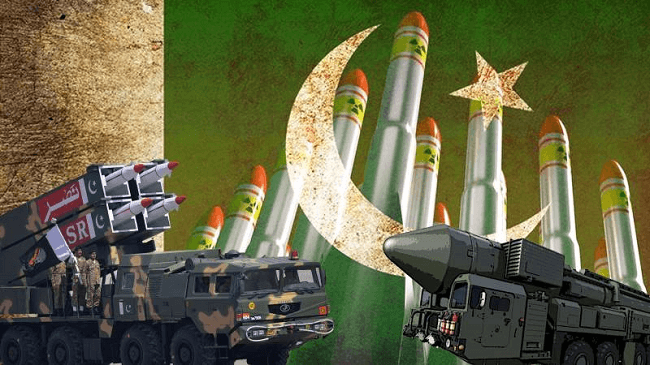
The current situation brings into sharp focus the risks posed by nuclear-armed countries with unresolved territorial disputes. The India-Pakistan conflict is not just a regional issue; it’s a global one. The potential for nuclear escalation has world leaders on edge, as even small-scale military exchanges could lead to devastating consequences.
The most pressing concern is the Kashmir region, long regarded as the flashpoint between the two nations. Both India and Pakistan have nuclear arsenals, and while their nuclear doctrine emphasizes deterrence, the escalation of conflict could threaten the very concept of mutual assured destruction (MAD). This has created a state of heightened alert, with military analysts warning that even a limited conflict could spiral into a larger-scale nuclear war.
The Humanitarian and Economic Fallout
As military readiness intensifies, the humanitarian impact becomes ever more apparent. The people living in border villages are the first to bear the brunt of these hostilities.The threat of cross-border shelling has already displaced thousands, and reports indicate that authorities are setting up refugee camps in anticipation of a surge in displaced persons. Civilian casualties are a grave concern, particularly in Kashmir, where tensions are the highest.
Businesses in the tourism industry are already feeling the economic consequences, with many facing significant impacts. The Kashmir Valley, which was once a bustling destination for both Indians and Pakistanis, now faces a severe decline in visitors due to safety concerns. The Indus Waters Treaty suspension has also added pressure on the agricultural sector, as farmers in both countries face disruptions in water supply for crops.
The global supply chains that depend on stability in South Asia are also at risk. India and Pakistan play crucial roles in regional trade, and any disruption can have far-reaching effects. Energy markets are likely to be affected, especially given the region’s importance in the energy sector.
Diplomatic Paths Forward: A Crucial Moment for Global Mediation
Despite the dire situation, there is still room for diplomatic resolution. International mediation has been suggested, with calls for a ceasefire agreement and a return to peace talks. However, there is a serious trust deficit between the two nations, making any progress difficult. That said, global powers, including the U.S., Russia, and the European Union, have expressed a desire to facilitate peace talks, urging both India and Pakistan to step back from the brink of war.
In this context, confidence-building measures (CBMs) will play a key role in reducing military tensions. These might include establishing hotlines between military commanders, agreeing to non-aggression pacts, and engaging in track-two diplomacy, which involves unofficial communication channels between the two governments.
Why This Matters to You: Understanding the Larger Picture
While the situation may seem far removed from everyday life, the India-Pakistan conflict has direct implications for global peace and security. The ripple effects of this crisis impact global trade, diplomatic relations, and even the safety of travelers in the region. Moreover, as citizens of the world, we are all part of the collective responsibility to promote peace, understanding, and dialogue.
For readers across the globe, understanding the human cost of conflict, the military dynamics involved, and the economic impact will foster a greater appreciation for why peace in this region is critical for all.
The Role of Attaullah Tarar in the Crisis
A Leading Voice in Pakistan’s Response
In the midst of the escalating tensions, Attaullah Tarar, Pakistan’s Information Minister, has emerged as a key figure in articulating the country’s official stance on the India-Pakistan conflict. His role has become increasingly prominent, as he has been vocal about the importance of Pakistan’s sovereignty and its position in the face of India’s military mobilization.
Tarar’s statements have been a blend of defiance and caution, reflecting Pakistan’s struggle to balance the need for national defense with the desire to avoid a full-scale war. For many Pakistanis, Tarar’s messages serve as a source of national pride, reinforcing the belief that the country will not be intimidated into submission.
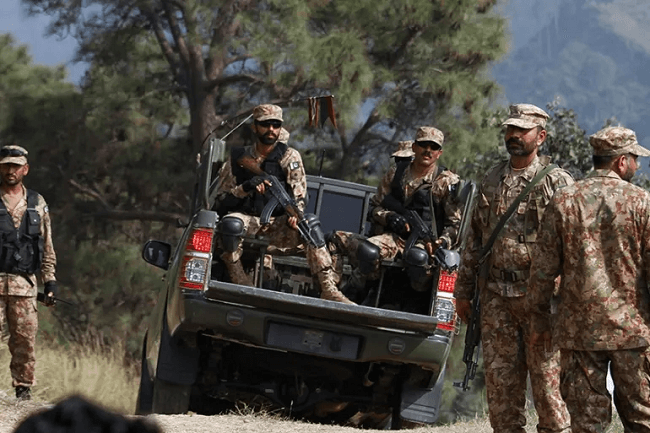
A Message of National Unity
Through televised addresses and social media posts, Tarar has rallied the Pakistani public, urging them to stand united in the face of external threats. His rhetoric has resonated with many, particularly in Kashmir, where the population feels the brunt of both military presence and political instability. “Pakistan will defend itself at all costs” has repeatedly appeared in his speeches, a sentiment also echoed by the Pakistani military.
Diplomatic Outreach: Calls for International Attention
While his role as a spokesperson has been pivotal domestically, Tarar has also made efforts to influence the international community. He has called on the United Nations and global powers to take a more active role in mediating the India-Pakistan crisis. This appeal for peace aims to prevent an arms race in the region and ensure that diplomacy prevails over militarization.
For readers, understanding Tarar’s public discourse provides an insight into how political figures play a role in shaping the national sentiment during a crisis. It emphasizes the importance of leadership in times of uncertainty, where calm words can influence the public’s response and the country’s path forward.
Military Capabilities – India vs. Pakistan
A Close Look at the Military Balance
The question on many minds is: What would happen if war broke out between India and Pakistan? As both countries gear up for potential conflict, their military capabilities are under intense scrutiny. Both nations have heavily invested in their defense sectors, with particular emphasis on strategic deterrence and advanced technology.
India’s Military Superiority
India’s military is considered one of the most formidable in the region. With a budget of over $60 billion, India has continued to modernize its forces, focusing heavily on air superiority and cutting-edge cyber warfare capabilities. Key elements of India’s military strength include:
Indian Air Force (IAF): Home to the Sukhoi Su-30MKI fighter jets, and BrahMos cruise missiles, which are capable of striking high-value targets.
Nuclear Arsenal: India has the ability to deliver nuclear weapons via its land, sea, and air forces, making it a key deterrent in any conflict scenario.
Cyber Warfare: India has also developed a robust cyber capabilities that could target the digital infrastructure of its adversaries, potentially crippling Pakistan’s military operations without traditional combat.
Pakistan’s Strategic Strengths
While India boasts a larger military force, Pakistan has maintained its own strategic advantages, particularly when it comes to asymmetric warfare and nuclear deterrence. Key points of Pakistan’s defense capabilities include:
Geographical Advantage: The terrain of Kashmir, with its rugged mountains and difficult terrain, would favor defensive operations for Pakistan’s military.
Nuclear Deterrence: Pakistan’s nuclear weapons are not just a defensive measure but also a signal of deterrence. Pakistan’s nuclear strategy focuses on “credible minimum deterrence”, ensuring that any Indian strike would result in catastrophic retaliation.
Special Forces: Pakistan’s Special Services Group (SSG) and commandos are renowned for their expertise in high-risk, covert operations, making them crucial in executing asymmetric warfare tactics.
Potential Scenarios: A War That Nobody Wants
Given both countries’ advanced military capabilities, any military action would likely result in devastating consequences. The nuclear weapons held by both sides make this conflict uniquely dangerous. Even a limited engagement could escalate into an all-out nuclear war, raising alarms among world leaders. As the world watches, the stakes could not be higher. The threat of nuclear escalation looms large, and the hope is that diplomacy and restraint will prevent full-scale war.
Pathways to De-escalation – Can Diplomacy Prevail?
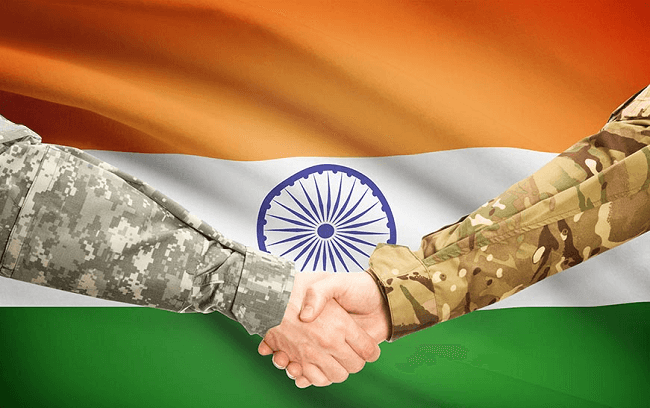
The Importance of Diplomacy in a Volatile Situation
Amid the military buildup and the growing fear of war, there remains a glimmer of hope: diplomacy. Although territorial disputes have historically driven the India-Pakistan conflict, international players increasingly recognize that only dialogue and negotiation can prevent further escalation.
Diplomatic Channels: A Lifeline for Peace
The first step in de-escalation is the re-establishment of diplomatic channels. Both India and Pakistan need to engage in direct talks, despite their mutual distrust. The Simla Agreement of 1972, which has long been the foundation of Indo-Pakistani relations, provides a framework for resolving disputes peacefully. Although Pakistan’s suspension of this agreement is concerning, its return to the table could set the stage for a new phase of dialogue.
Track II Diplomacy: A Behind-the-Scenes Solution
While official channels might be difficult to open, Track II diplomacy—unofficial dialogue between experts, former diplomats, and civil society organizations—can provide a path forward. This could allow both sides to explore potential compromises without the immediate pressures of formal statecraft. International peacekeepers and mediators could also play a key role in facilitating these conversations, offering neutral grounds for discussions.
The Role of Global Powers
China, the United States, and Russia have crucial roles to play. These countries have the diplomatic clout to encourage both sides to return to peace talks. The United Nations also remains a critical actor, especially in providing peacekeeping forces and humanitarian aid in the event of further escalation.
The Role of Ordinary Citizens: From War to Peace
For ordinary citizens, advocating for peace through local efforts is more important than ever. Social media campaigns, petitions, and grassroots movements can influence public opinion, pushing governments toward diplomacy instead of warfare. Ultimately, the voice of the people can hold tremendous power in guiding the future of the India-Pakistan relationship.
❓ FAQ: Common Questions About the India-Pakistan Conflict
1. What triggered the recent escalation between India and Pakistan?
The recent escalation between India and Pakistan was triggered by a terrorist attack in Pahalgam, Kashmir, on April 22, 2025, where 26 people, mostly Hindu tourists, were killed. The Resistance Front, allegedly linked to Pakistan-based militants, claimed responsibility for the attack. India accused Pakistan of supporting these militant groups, leading to increased hostilities.
2. Is war between India and Pakistan imminent?
While tensions are extremely high, and both countries have mobilized their military forces, a full-scale war is not inevitable. Diplomatic efforts are ongoing, and global powers are urging both sides to avoid military conflict. However, the situation remains volatile, with military readiness on both sides.
3. What are the military capabilities of India and Pakistan?
India has a larger military budget, advanced aircraft, and missile systems. It also has a formidable nuclear arsenal capable of striking Pakistan.
Pakistan, although militarily smaller, possesses nuclear weapons as well, and its strategic location in Kashmir offers significant defensive advantages. Pakistan’s special forces are highly trained for covert operations and asymmetric warfare.
4. How does the nuclear threat affect the India-Pakistan Conflict?
Both India and Pakistan are nuclear-armed nations, which makes this conflict particularly dangerous. The presence of nuclear weapons on both sides acts as a deterrent, but it also increases the risk of escalation. Even a small-scale military clash could potentially escalate into a nuclear confrontation, making the situation highly sensitive.
5. What steps are being taken to de-escalate the conflict?
Diplomatic talks between India and Pakistan are crucial in avoiding full-scale war. International powers like the United States, China, and the United Nations have called for de-escalation.
Track II diplomacy, which involves informal talks between experts and civil society members, could also play a role in facilitating peace.
Global mediators are working behind the scenes to encourage both countries to return to the negotiation table.
6. How are ordinary citizens affected by this India-Pakistan Conflict?
Ordinary citizens, especially those living near the India-Pakistan border, bear the brunt of the tensions. Families are separated, and displaced populations are growing. People who work in cross-border trade or the tourism sector in Kashmir are also facing economic hardships. The suspension of visas and diplomatic expulsions are further affecting the lives of people on both sides.
7. Why is Kashmir so important in this conflict?
Kashmir has been at the heart of the India-Pakistan conflict for decades. It is a disputed region claimed by both India and Pakistan, which has led to several wars. The region is strategically important due to its geographical location and natural resources, and it has significant religious and cultural significance for both nations. Both countries consider it a critical part of their national identity.
8. Can there be a peaceful resolution to the India-Pakistan conflict?
A peaceful resolution is possible, but it will require significant diplomatic efforts from both governments, supported by the international community. Trust-building measures, such as reopening communication channels, addressing water-sharing disputes (like the Indus Waters Treaty), and tackling the Kashmir issue through dialogue, are key components of any lasting peace agreement.
9. How does this conflict impact global trade and the economy?
The India-Pakistan conflict poses a risk to global trade, especially in South Asia. Disruptions in the tourism sector, cross-border commerce, and agricultural trade are already being felt. Moreover, if the conflict escalates, it could affect global supply chains, particularly in energy markets, as both countries are important players in the South Asian economy.
10. What can the international community do to help resolve the conflict?
The international community, including the United Nations, global powers, and regional stakeholders, can play a crucial role in mediating peace talks, providing humanitarian aid, and encouraging both sides to engage in meaningful dialogue. The international community can also help in enforcing ceasefires and providing support for confidence-building measures between India and Pakistan.
11. Is there any hope for peace between India and Pakistan?
While the situation is tense, there is hope for peace. The global call for dialogue and the involvement of international mediators can lead to a de-escalation of hostilities. Moreover, peace movements, grassroots activism, and cultural exchanges between ordinary citizens on both sides can also play an important role in fostering understanding and reconciliation.




